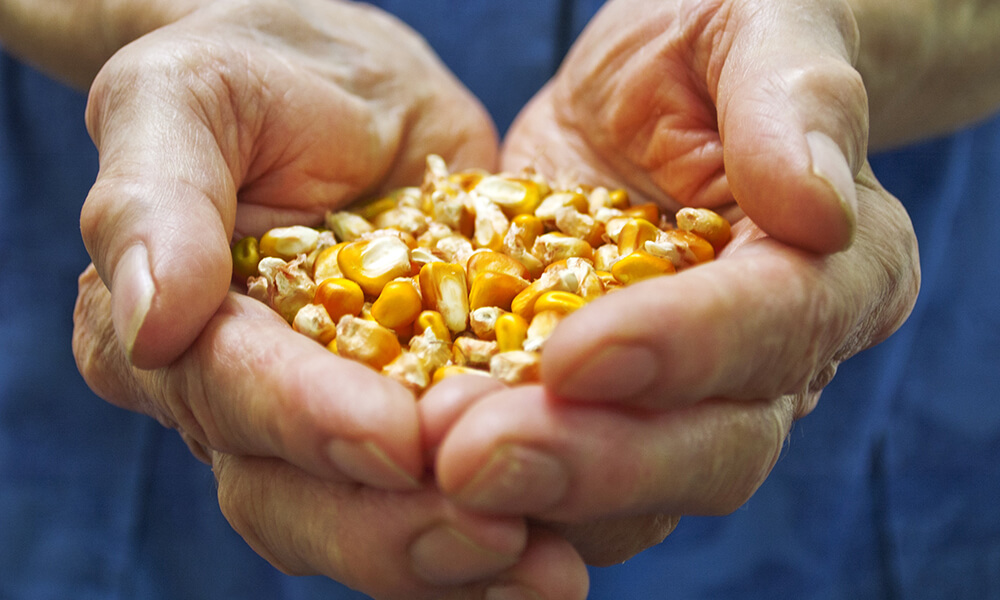Pop Crop: Farmers cultivate popcorn varieties
Popcorn has a history all over the world, from remote regions of South America, India and China to the prairies of the American Midwest. The puffy kernels have been consumed for centuries and featured as Christmas decorations and jewelry. Popcorn snacks are an established tradition at movies, baseball games, and parties. What people don’t realize is that popcorn doesn’t come from a microwavable bag. Before the salty snack pops into grocery stores, farmers across America cultivate it in their fields.
Variety is the popcorn of life
Field corn, sweet corn and popcorn are all separate kinds of corn with different characteristics. There are several kinds of popcorn and even more hybrid varieties. Butterfly popcorn is the big and fluffy kind that you would eat at the movies. Mushroom popcorn is a little more compact, commonly used to make kettle corn, camel corn or cheese popcorn. Parched corn is made up of little kernels that pop loudly and have their own unique flavor. This kind of corn is noted for its sweetness that develops the longer you chew it. “Parchies” aren’t exactly popcorn, but they’re often associated with it.
Popcorn varieties are identified by the shape of the un-popped kernels, the color of the un-popped kernels, and the shape and size of the popped kernels. Most people eat white and yellow hull-less varieties at home. Other kinds include rice popcorn, pearl popcorn, and strawberry popcorn. Black popcorn has black kernels that pop white. Calico or rainbow varieties are named for their colorful kernels featuring red, blue, white and yellow kernels. Dynamite and snow puff popcorn have the largest kernels after they’re popped compared to other varieties.
Tassels: fixed or floppy?
Although popcorn comes in many different kinds, its stalks are easily identifiable. Tassels that grow on field corn and sweet corn are fixed in place, standing rigid and upright. Popcorn tassels are floppy tops that pollinate the ears of corn. Without tassels and pollination, popcorn kernels wouldn’t grow. Farmers carefully monitor where they plant popcorn because the big tassels can easily cross-pollinate other varieties. Sweet corn can lose some of its flavor if it cross-pollinates with popcorn.

Popcorn picking and processing
Fields of corn bursting into popped popcorn kernels under the hot summer sun would be an exciting way to harvest the crop, but that doesn’t really happen. Popcorn is a food grade crop. Food grade crops have special regulations for harvesting and processing because they eventually end up on grocery store shelves and kitchen tables. Even though it’s harvested like other corn varieties, the equipment has to be cleaned before the popcorn is harvested and processed. Extra steps are taken to make sure there aren’t any debris or contaminants in the harvested kernels. After harvest, the corn is stored in an elevator until it can be transported to a popcorn processing plant.
Once the popcorn arrives at the processing facility, the load is evaluated to make sure that it’s up to quality standards. The popcorn people check the corn’s moisture levels and look for contaminants and debris. If the popcorn doesn’t meet requirements, the farmers can be charged a fee or the kernels can be rejected. When the kernels are cleared, farmers will dump the load and the processing begins. Some plants package the kernels to be popped at home and others heat the popcorn so it’s ready to eat. The quality of a batch of popcorn is measured by how much the kernels expand and the percentage of kernels that pop.
Un-popped kernels add crunch while you munch
Kernels that don’t pop add an unwelcome crunch to the soft puffs. Popcorn kernels have a hard exterior, but the inside is filled with moisture. This is what makes popcorn different from other kinds of corn. When the kernels are heated up, the inside expands and explodes into puffy kernels. When popcorn kernels don’t pop, it’s usually because the pressure leaked out of the outside hull. Without pressure buildup, there’s no eruption.
Farmers who grow popcorn enjoy the salty snack as much as consumers do. Popcorn has become part of American culture at movie theaters, baseball stadiums, and home gatherings. Flavor combinations are as numerous as the popcorn varieties that grow in fields across the nation. Next time you pop in a movie, pop a new variety of popcorn and try to taste them all.
